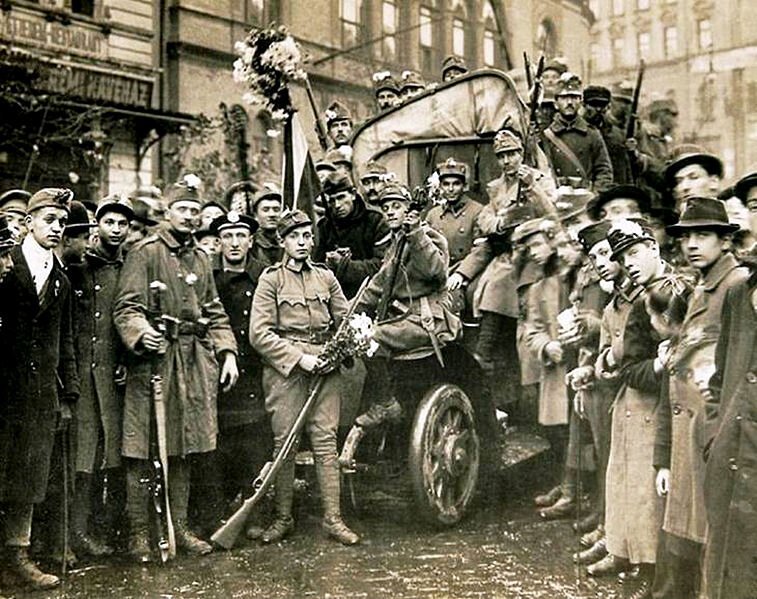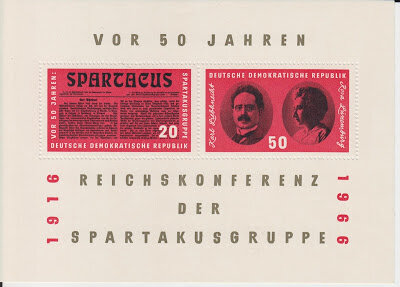Did Poland Save the World from Communism?
In the late phases of World War I and its immediate aftermath, Communist revolutions spread over Eastern Europe. With widespread devastation, death, and deprivation from the war, people were dissatisfied and angry with their governments. As the Bolsheviks solidified their hold on Russia, they sought to expand their influence and support other Communist / Bolshevik revolutions. 100 years ago, in August 1920, the Soviet armies moved west. In their way, Poland.
Russian Revolution and Civil War
World War I ruined the Russian Empire through military defeats and economic hardship. The Tsar lost support throughout the country and abdicated in early 1917. He was replaced by a provisional coalition government that kept Russia in the war against Germany and Austria-Hungary. Conditions worsened and late 1917, the Communist Bolsheviks, under Lenin and Trotsky, seized power. To solidify their position, the Soviets withdrew from the war against Germany and signed the Treaty of Brest-Litovsk in 1918. Among other provisions, the Soviets gave up territorial claims to significant parts of Poland and the Ukraine.
In 1918 the Russian Civil War started with the Red Army (Communist/Bolshevik) fighting the Whites (a loose coalition of anti-communist forces). It was a brutal and costly war. Battles continued into 1922, but by late 1919 the Red Soviet army was emerging victorious.
Communist Revolutions
At the end of World War I, Communist uprisings and the creation of Soviet-style states occurred throughout Eastern Europe. In early 1919 the Communist Party of Germany started what became known as the Spartacus revolution (named after the Roman slave rebellion led by Spartacus). One of its leaders, Rosa Luxemburg, stated:
“Today, we can seriously set about destroying capitalism once and for all. Nay, more; not merely are we today in a position to perform this task, nor merely is its performance a duty toward the proletariat, but our solution offers the only means of saving human society from destruction.”
This rebellion was quickly put down, but unrest continued in Germany. In 1919, Bavaria founded a short-lived Bavarian Soviet Republic (also known as the Munich Soviet Republic). Workers in the city of Bremen also founded a Soviet State. These Communist Republics were short-lived. In Hungary, leaders demanded the secession of Hungary from the Austro-Hungarian empire. In what was known as the ‘Aster Revolution (the troops wore Asters),’ soldiers supported the creation of the First Hungarian People’s Republic in 1918. It did not last long as the Communist Party mounted a coup d’etat in 1919, creating the Hungarian Soviet Republic. During its six-month existence, this regime supported the creation of the short-lived Slovak Soviet Republic in part of Czechoslovakia.
Self-Determination and Boundary Wars
Europe Before and After World War I
United States President Woodrow Wilson articulated ‘self-determination’ as a major goal for the post war peace treaties as part of his ’Fourteen Points.’ Self-determination was the ability of people to create their own government and state, which, in those days, generally meant a country for each major ethnic group. Several countries were created from the detritus of Austria-Hungary, including Poland, Hungary, Romania, Czechoslovakia, and Yugoslavia. Instability reigned throughout as different factions competed for power. Country borders were a significant difficulty because the various ethnic groups were intermingled. Poles lived with Ukrainians who lived with Hungarians next to Czechs, etc. Several border wars broke between the different newly founded countries including, as described below, between Poland and the Ukraine.
Poland – Ukrainian War
Poland lost its independence in 1792 and was reconstituted at the end of World War I from three collapsed empires - German, Russian, and Austrian-Hungarian. It was difficult to draw a clear boundary between Poland and the Ukraine. By 1920 the Communists were winning the Russian Civil War and wanted to incorporate Ukraine into the Soviet Union. Further, Lenin and Trotsky wanted to assist the other Communist movements and revolutions in Europe. With Soviet armies advancing into the Ukraine, the Poles and Ukrainians became allies to face the Red armies.
Polish Troop Recuitment Poster
The Odds
Imagine the challenge faced by Poland in 1920. After World War I, Poland was reconstituted from portions of three empires. Ethnic Poles had fought in three different armies, sometimes against each other. Weapons brought by these soldiers into combat were incompatible. Under two years later the country faced an onslaught from the Soviet Union.
Poland – Russian War
The Polish forces advanced and took Kyiv (Kiev) in 1920. But the Soviets counterattacked and routed the Polish troops. By August 1920, the Red Army had advanced to the gates of Warsaw on the Vistula river. The fall of Warsaw appeared to be inevitable. In what became known as the “Miracle of the Vistula,” the Polish forces attacked and routed the Soviet forces. Of note, Poland received support from the ‘Kościuszko Squadron,’ a volunteer American airforce squadron. It was named after Tadeusz Kościuszko, a Polish military engineer who fought for the United States in the Revolutionary War. After the Polish victory, Poland and Soviet Russia signed a peace treaty, the Treaty of Riga, in 1921. The borders defined in this treaty were favorable to Poland. They lasted until the Soviet Union and Germany invaded Poland in 1939.
If the Soviet Union had defeated Poland in 1920, Poland would likely have become a Communist country. With Germany and Eastern Europe unstable, it is quite possible Communism could have expanded significantly beyond the Soviet Union. Perhaps in 1920, Poland saved the world from Communism, at least for a time.
World War II and the Fall of Communism
Polish Borders Before and After World War II
World War II in Europe started in 1939 when Germany and the Soviet Union invaded Poland. In 1945, at the end of the war, the Soviet Union’s troops occupied Eastern Europe. Poland’s borders were changed; it lost land to the East to the Soviet Union partially offset by former German territory. The Soviet Union installed puppet Communist regimes in Poland and other Eastern European countries. In 1989, Poland transitioned to a democratic republic as Communism and the Soviet Union fell.
Post Script - King Kong
King Kong Poster Showing Cooper as Director
Merian Cooper was a pilot in the Kościuszko Squadron. His plane was shot down, he survived both the crash and nine months as a Soviet prisoner. He later directed and produced King Kong in 1933, personally appearing as the pilot of the plane that finishes off Kong.





